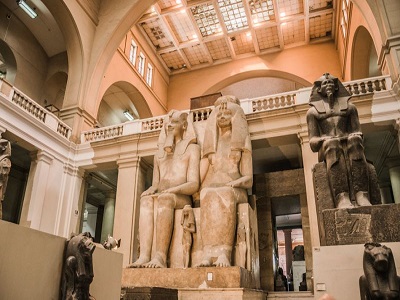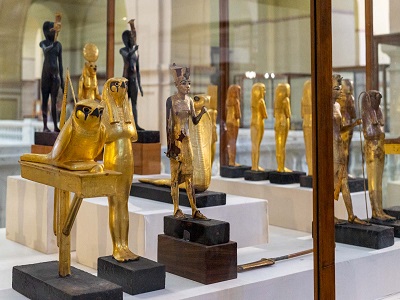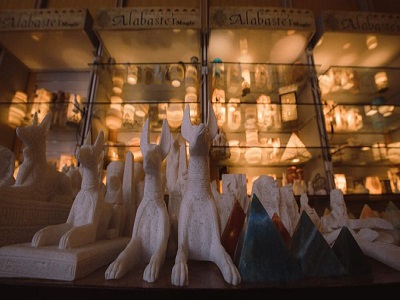The Egyptian
Museum
It is no surprise to find in a great city like Cairo,
one of the largest and oldest museums in the world the Egyptian Museum. Walking
around the museum's halls and galleries is like a journey through the ancient
history of the Pharaonic civilization of Egypt.
The Egyptian Museum is the first purpose-built museum,
and it exhibits more than 150.000 pieces of ancient artifacts that date back to
different Pharaonic eras in Egypt.
Background and Architecture
The first Egyptian museum was established during the
Mohammad Ali era. The museum was to preserve and protect the valuable Egyptian
antiquities from being lost. Most of the discovered antiquities at that time
were sent to Europe by the foreign consulates in Egypt. So, Mohammad Ali Pasha banned
the exporting of Egypt antiquities. He also decided to establish a museum to
house the unique collection of Egyptian antiquities and artifacts. The museum
was located at Azbakeya in Downtown Cairo, and it was called the Azbakeya
Museum.


Then in 1858 when the French archaeologist Mariette
was appointed as the director of the newly established Egyptian Antiquities
service, he succeeded to set up the first museum of the Egyptian antiquities
where he transferred all his discovered antiquities.
In 1863, Khedive Ismail approved the construction of a
museum of Egyptian antiquities in the city Centre, but the project was
postponed, and Mariette was just granted more space in front of the house in
Boulaq to expand his museum. During the
same year, the Boulaq Museum was officially inaugurated and opened to the
public. In 1878, an unusually high Nile
flood caused much damage in Boulaq and many artifacts were destroyed. The
Boulaq Museum was closed for renovation and repair until 1881, after which it
was reopened. Mariette passed away that same year and was succeeded by Gaston
Maspero as Director of the Boulaq Museum and Department of Antiquities.
In 1880, giving the increasing of the museum's
collection, the collection was transferred to the Ismail Pasha Palace in Giza,
which is now Giza Zoo. Upon his appointment as Director of the Museum and
Department of Antiquities, the scholar Jacques de Morgan reorganized the
collection in the new museum, which was then known as the Giza Museum.
In 1897, Khedive Abbas Helmy ii laid the cornerstone
of the Egyptian Museum, and it was officially open on 15 November 1902 in its
current location in Tahrir Square and became one of the most famous museums in
the world.
Although the museum houses a collection of artifacts
dates back to the Pharaonic era, the museum was designed in the European
architectural models by the French architect Marcel Dourgnon.
The museum façade is designed in the French
architectural style and decorated by marble paintings of the world most famous
archaeologists. The internal design of the museum's halls is influenced by the
Ancient Egyptian Art style. On the sides of the wooden entrance door are two
large statues of two Roman-style ladies with Pharaonic-style heads.
The Museum's location
It is situated north Tahrir Square Downtown Cairo near
Sadat Metro station
The Museum's collection
The Egyptian Museum exhibits the world's most
extensive collection of Pharaonic antiquities discovered in the Middle
Kingdom's Royal family cemeteries in Dahshur in 1894. Over 150,000 artifacts
are narrating the ancient Egyptian civilization.


The artifacts are displayed on two main floors the
ground floor and the first floor. On the ground floor, you can follow the
history of Egypt from the Old Kingdom up through the Greco-Roman period.
The Egyptian Museum on
Google Maps
Last Update: 2024


